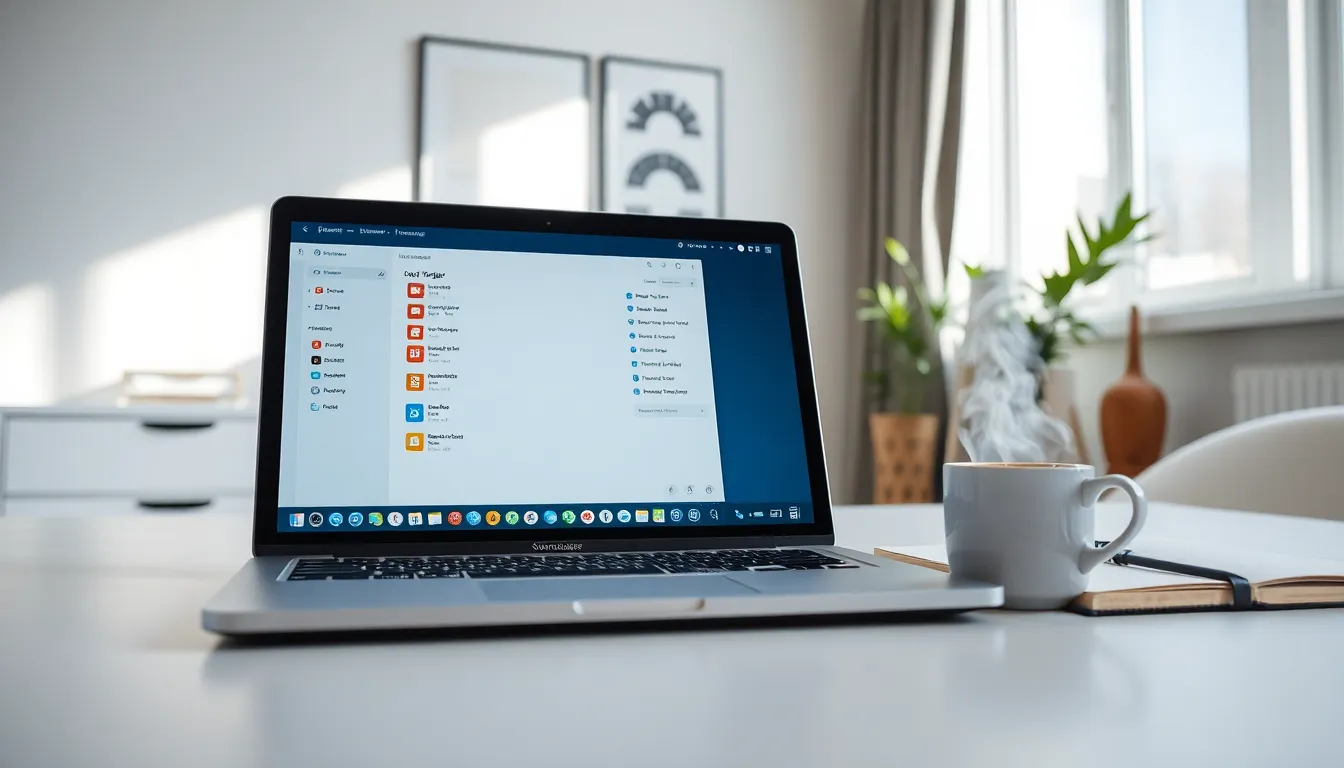In a world where finding balance feels like a high-wire act, yoga apps have swooped in like a superhero in stretchy pants. They bring the serenity of a yoga studio right to your living room—no need to awkwardly navigate your way through a crowded class or pretend you know what a downward dog is. With just a few taps, anyone can become a master of mindfulness and flexibility, all while wearing their favorite pajamas.
Table of Contents
ToggleOverview of Yoga Apps
Yoga apps offer flexibility and accessibility for those pursuing balanced living. These applications bring the benefits of yoga into users’ homes, promoting mindfulness without the necessity of attending studio classes.
Benefits of Using Yoga Apps
Users enjoy various advantages when utilizing yoga apps. Convenience ranks high, as they enable practice anytime and anywhere. Tailored experiences cater to individual skill levels, allowing personal growth. Access to diverse styles enriches practices, from Hatha to Vinyasa. Cost-effectiveness attracts many, as numerous apps provide free content or affordable subscriptions. Additionally, guided sessions enhance motivation, encouraging regular practice.
Popular Features to Look For
Essential features enhance the experience of yoga apps. Session variety ensures users find routines that suit their needs. Customization options allow for personalized schedules and preferences. In-app tracking helps monitor progress over time. Community forums facilitate interaction, providing support and encouragement. Lastly, instructional videos aid in perfecting postures, ensuring safety and effectiveness during practice.
Top Yoga Apps Reviewed
This section reviews popular yoga apps that enhance the flexibility and accessibility of personal practice, each catering to diverse needs.
App 1: Down Dog
Down Dog offers customizable yoga sessions ranging from beginner to advanced levels. Users select yoga types, duration, and difficulty for a personalized experience. With new routines generated daily, variety keeps the practice fresh. The app provides guided poses, ensuring users maintain proper form. Down Dog’s soothing music enhances relaxation. Subscriptions grant access to additional features, including specialized programs like prenatal yoga. Many find it user-friendly, making it a top choice for home practice.
App 2: Yoga Studio
Yoga Studio brings a comprehensive library of over 80 guided classes. It features various styles, such as Hatha and Vinyasa, appealing to different preferences. Users appreciate the ability to create their sequences and customize class lengths. The app also includes a built-in timer, which helps users keep track of practice sessions. Video quality is high, providing clear visual instruction for safety and effectiveness. For those looking for a complete experience, Yoga Studio stands out with its wide array of content.
App 3: Glo
Glo offers streaming classes led by experienced instructors, ideal for all skill levels. Users access a vast library of over 4,000 classes across different styles like meditation and Pilates. Unlike many others, Glo emphasizes community support, with forums for user interaction. Personalized recommendations enhance the practice experience by matching classes to user preferences. Users can also download classes for offline practice. This versatile app cultivates a sense of belonging while maintaining accessibility and convenience.
Comparisons and Pricing
Yoga apps offer a range of pricing options, catering to various preferences and budgets.
Free vs. Paid Yoga Apps
Free yoga apps often provide limited content, like basic routines and a small selection of classes. Some top choices in this category include “Down Dog” and basic versions of “Yoga Studio.” Users may experience ads or restrictions that can affect their practice. On the other hand, paid apps typically offer extensive libraries of classes, personalized experiences, and additional features. For instance, premium versions of “Glo” and “Yoga Studio” open up advanced classes, detailed tracking, and new weekly content. Evaluating free versus paid options helps users decide based on their commitment and practice goals.
Subscription Models and Offers
Most yoga apps implement subscription models, usually monthly or annually. For example, “Down Dog” charges about $7.99 monthly but offers discounted rates for yearly subscriptions at $49.99. “Glo” presents similar pricing, offering a free trial period to help users explore its extensive catalog. Many apps may feature promotional offers or student discounts, further easing the cost burden. It’s crucial for users to compare these models to find a solution aligning with their budget and needs. This balance between access and affordability influences overall satisfaction in their yoga journey.
User Experience and Feedback
User feedback plays a crucial role in evaluating yoga apps. Users consistently appreciate the convenience, flexibility, and diverse offerings of these applications, which enhance their home practice experience.
Testimonials from Users
Many users express satisfaction with the customization features available in apps. They often mention the ability to tailor sessions to match individual preferences and skill levels. For example, a user might emphasize how “Down Dog” has transformed their practice with its varied routines. Others find “Yoga Studio” beneficial, noting the extensive library of classes that keeps their practice engaging. Users also highlight the positive impact of practicing in a comfortable environment, sharing that they enjoy the freedom of not feeling judged. Overall, these testimonials reflect a strong appreciation for the accessibility and personalization these apps provide.
Expert Opinions
Yoga experts frequently commend the rise of yoga apps for their role in broadening access to yoga. Professionals acknowledge that these applications cater to busy lifestyles while ensuring quality instruction. Experts particularly appreciate the variety of yoga styles available, recognizing that options like Hatha and Vinyasa meet diverse practitioner needs. Additionally, safety features, such as guided poses in instructional videos, receive praise for preventing injuries. Professionals also emphasize the importance of community forums, encouraging users to engage and support one another, enhancing the overall experience. These insights reinforce how yoga apps align with contemporary wellness trends.
Conclusion
Yoga apps have revolutionized the way individuals approach their practice by providing accessible and flexible options for all skill levels. With the convenience of practicing anytime and anywhere users can seamlessly integrate mindfulness into their daily routines. The variety of features offered by these apps enhances the overall experience making it easier for practitioners to find what suits their needs.
As more people embrace the benefits of yoga at home the popularity of these apps is likely to continue growing. They not only offer quality instruction but also foster a sense of community among users. This evolution in yoga practice underscores the importance of technology in promoting wellness and personal growth.






